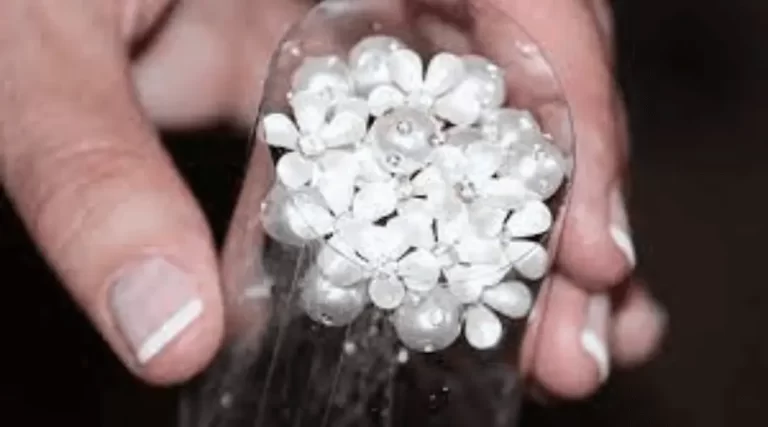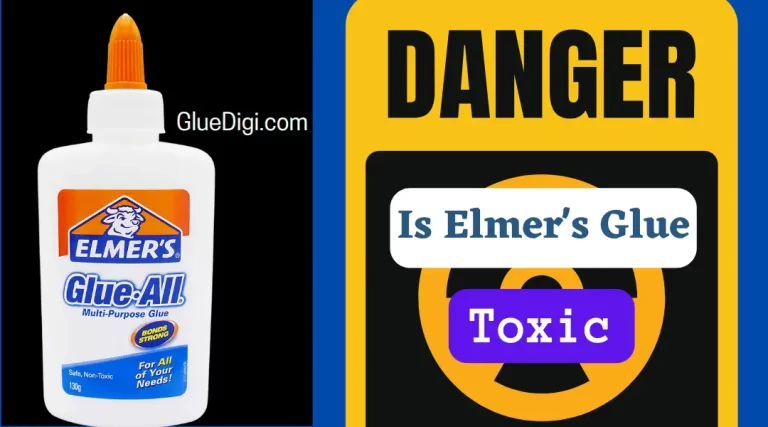JB Weld is a popular adhesive product that many DIY enthusiasts and professionals use for various applications. Its versatility and strength make it a go-to solution for fixing almost anything. But when it comes to electrical properties, is JB Weld conductive or non-conductive? This comprehensive guide will provide you with an in-depth understanding of JB Weld’s electrical properties, its practical applications, and some alternatives.
Let’s dive into this peculiar topic and uncover the taste, health risks, and even unique uses of glue beyond its intended purpose.
Understanding JB Weld: A Brief Overview
Before diving into the electrical properties of JB Weld, it’s essential to gain a basic understanding of this versatile adhesive. In this section, we’ll discuss what JB Weld is, its common uses, and the different types of JB Weld products available in the market.

What is JB Weld?
JB Weld is a two-part epoxy adhesive that consists of a resin and a hardener. When mixed in the correct ratio, these two components create a strong bond that can withstand high temperatures, resist water, oil, and chemicals, and maintain structural integrity over time. The unique formula of JB Weld makes it a popular choice for both professionals and hobbyists alike.
One of the reasons why JB Weld is so popular is its versatility. It can be used for a wide range of applications, from automotive repairs to household projects. Additionally, JB Weld is easy to use, as it can be applied to surfaces with a brush, syringe, or putty knife.
Common Uses of JB Weld
JB Weld is typically used for repairing and bonding various materials, including metal, plastic, wood, ceramic, and glass. Here are some common applications:
- Automotive repairs, such as fixing cracked engine blocks or sealing leaks in gas tanks.
- Plumbing repairs, including sealing leaky pipes or bonding broken fixtures.
- Household repairs, like mending broken furniture or filling gaps in doors and windows.
- Hobby projects, including creating sculptures or fixing damaged figurines.
JB Weld is also commonly used in industrial settings, such as manufacturing and construction. Its ability to bond a wide range of materials makes it a valuable tool for professionals in these fields.
Types of JB Weld Products
There are several JB Weld products available, each formulated for different applications and materials. Some popular types include:
- Original JB Weld: The standard two-part epoxy, suitable for most applications.
- JB Weld KwikWeld: A fast-setting version with a shorter curing time but lower overall strength.
- JB Weld SteelStik: A steel-reinforced epoxy putty that can be molded and shaped before curing.
- JB Weld PlasticWeld: A specially formulated epoxy designed for bonding plastics.
- JB Weld HighHeat: An epoxy putty designed for high-temperature applications, such as exhaust systems and fireplaces.
Each type of JB Weld product has its own unique properties and is formulated for specific applications. For example, JB Weld SteelStik is ideal for repairing metal surfaces, while JB Weld PlasticWeld is designed for bonding plastics. It’s important to choose the right JB Weld product for your project to ensure the best results.
In conclusion, JB Weld is a versatile and reliable adhesive that can be used for a wide range of applications. Whether you’re a professional mechanic or a DIY enthusiast, JB Weld is an essential tool to have in your toolbox.
The Science Behind JB Weld’s Electrical Properties
To better understand JB Weld’s electrical properties, we must examine its composition and how conductivity works in adhesives, as well as the factors that can affect conductivity.
Composition of JB Weld
JB Weld is a two-part epoxy that is primarily composed of a blend of epoxy resin and secret ingredients, which contribute to its strength and versatility. The epoxy resin is a thermosetting polymer that is created by mixing two components: a resin and a hardener. When these two components are mixed together, a chemical reaction occurs that causes the mixture to harden and cure. This curing process creates a strong, durable bond that is resistant to water, chemicals, and heat.
In addition to the epoxy resin, JB Weld also contains metal particles—specifically, iron—that give the cured epoxy its metallic appearance and may contribute to its electrical properties. The metal particles are evenly distributed throughout the epoxy and create a conductive pathway for electrical current to flow through.
How Conductivity Works
Electrical conductivity refers to the ability of a material to allow the flow of electric current. Conductive materials, such as metals, have a high number of free electrons that can move freely through the material, facilitating the transfer of electrical energy. In contrast, non-conductive materials, like most plastics and ceramics, have a limited number of free electrons, which makes them poor conductors of electricity.
In the case of JB Weld, the metal particles in the epoxy resin create a conductive pathway for electrical current to flow through. When an electrical current is applied to the cured epoxy, the metal particles act as conductors and allow the current to flow through the epoxy.
Factors Affecting Conductivity in Adhesives
Several factors can influence the electrical conductivity of an adhesive, including:
- Composition: The presence of conductive materials, such as metal particles or conductive fillers, can enhance the adhesive’s conductivity. In the case of JB Weld, the metal particles in the epoxy resin contribute to its conductivity.
- Curing conditions: Some adhesives may exhibit different conductive properties depending on their curing conditions, like temperature and humidity. For example, if an adhesive is cured at a higher temperature, it may have a higher conductivity than if it was cured at a lower temperature.
- Thickness: The thickness of an adhesive layer can impact its conductivity, with thinner layers typically being more conductive. This is because electrical current has an easier time flowing through thinner layers than thicker layers.
- Surface area: The surface area of the adhesive can also impact its conductivity. Adhesives with a larger surface area may have a higher conductivity than adhesives with a smaller surface area.
- Pressure: The pressure applied during the curing process can also impact the conductivity of an adhesive. Higher pressure can help to ensure that the adhesive is evenly distributed and in contact with all surfaces, which can improve conductivity.
Overall, the electrical properties of JB Weld are a result of its unique composition and the presence of metal particles in the epoxy resin. While other factors, such as curing conditions and thickness, can also impact the adhesive’s conductivity, the metal particles are the primary contributor to its electrical properties.
Is JB Weld Conductive or Non-Conductive?
Now that we have a better understanding of JB Weld’s composition and how conductivity works, we can look into the conductive and non-conductive properties of this versatile adhesive.
Conductive Properties of JB Weld
Due to the presence of metal particles in JB Weld’s formulation, it can exhibit some level of electrical conductivity. However, the conductivity of JB Weld is not consistent, and it may vary depending on factors like the thickness of the epoxy layer and the curing conditions. Also, although its conductivity is relatively low when compared to materials like copper or aluminum, it is still higher than most non-conductive adhesives.
Non-Conductive Properties of JB Weld
While JB Weld has some degree of conductivity, it’s important to note that it is not a reliable conductor of electricity. Its low conductivity levels and inconsistency make it an unsuitable option for applications that require precise and consistent electrical conduction. In most cases, it’s best to consider JB Weld as a non-conductive adhesive.
Comparing JB Weld to Other Adhesives
When comparing JB Weld to other adhesives in terms of electrical properties, it’s safe to say that most general-purpose adhesives, like standard epoxies and super glue, are considered non-conductive. However, some specialty adhesives, such as conductive epoxy or silver-filled epoxy, are specifically designed for electrical applications and offer much higher levels of conductivity.
Practical Applications of JB Weld in Electrical Projects
Now that you know the electrical properties of JB Weld, you may be wondering when and how to use it in electrical projects. In this section, we’ll discuss its role in electrical repairs, safety precautions, and tips for ensuring proper conductivity.
When to Use JB Weld for Electrical Repairs
While JB Weld should not be used in applications that require high levels of conductivity, it can still be helpful for securing or sealing electrical components, such as insulating electrical connections, patching plastic casings, or securing terminal blocks. However, if precise or consistent conductivity is paramount, it’s best to explore other options tailored specifically for electrical applications.
Safety Precautions for Using JB Weld in Electrical Projects
When using JB Weld in electrical projects, it’s essential to take the following safety precautions:
- Always disconnect the power source before attempting any repairs.
- Never use JB Weld in high-voltage applications or situations where electrical arcing may occur.
- Follow the manufacturer’s instructions for mixing, applying, and curing JB Weld to ensure optimal performance and safety.
Tips for Ensuring Proper Conductivity with JB Weld
If you decide to use JB Weld in an electrical project, here are some tips to maximize its conductive properties:
- Apply a thin layer of JB Weld, as it tends to be more conductive than thicker layers.
- Ensure the working surfaces are clean and free of grease, dirt, or corrosion, which can impede conductivity.
- Allow the epoxy to fully cure before testing its conductive properties or subjecting it to any electrical stress.
Alternatives to JB Weld for Electrical Repairs
If JB Weld is not suitable for your specific electrical repair needs, you may consider the following alternatives.
Conductive Epoxy
Conductive epoxy is designed explicitly for electrical applications and offers significantly higher levels of conductivity than standard epoxies. It is an ideal choice for bonding, soldering, and repairing electrical connections.
Soldering
Soldering is a widely-used method for creating electrical connections by melting a metal alloy (solder) onto the joint between two conductors. This provides a reliable and consistent electrical connection.
Wire Nuts and Connectors
Wire nuts and connectors can be used to secure electrical connections, allowing for easy disassembly and adjustments. These components provide reliable connectivity without the need for soldering or using an adhesive.
Conclusion
Is JB Weld Conductive? When it comes to the electrical properties of JB Weld, it’s important to recognize that although it possesses some conductive properties, it is not a reliable conductor of electricity. As such, it is not suited for applications that require precise or consistent conductivity. However, its strength and durability still make it a valuable adhesive for other applications, including securing and sealing electrical components.




